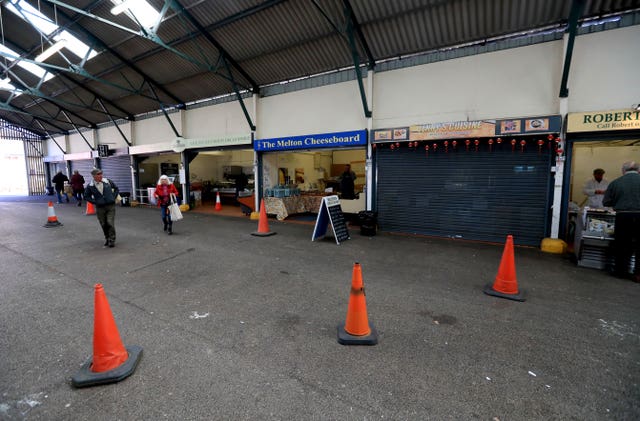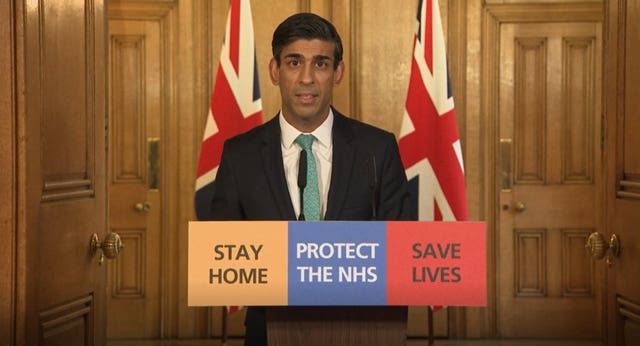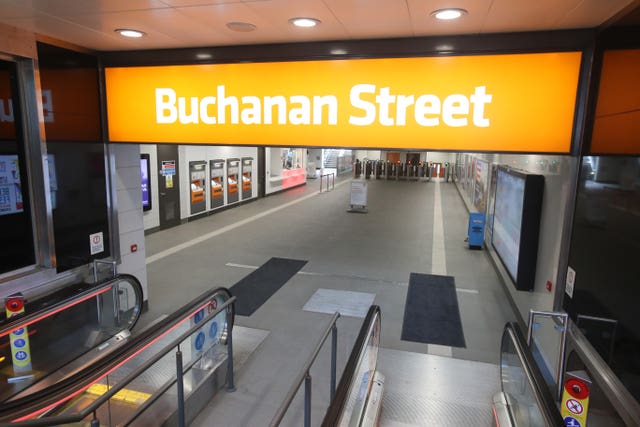
The Government’s scheme to help pay people’s wages and support businesses amid the Covid-19 pandemic has gone live.
The Coronavirus Job Retention Scheme will give people 80% of their usual earnings, meaning that they can be furloughed rather than laid off from their place of work as businesses try to cope with the fallout from Covid-19.
What money are you entitled to and how will the initiative work?
– What is furlough?
If you are furloughed then your employer is keeping you on the payroll while a business has less work than normal.

While on furlough you cannot undertake work for or on behalf of your employer.
Many shops, restaurants, hotels and other service industries in the UK have found themselves with no customers after being forced to close amid the pandemic, and many other firms have had work cancelled.
– Who is eligible?
Any employer with a UK payroll and a UK bank account will be able to claim on their employees’ behalf.
Employees must have been on their employer’s payroll scheme and had this notified to HM Revenue and Customs (HMRC) on or before March 19.
This means that people who work for businesses, charities and public authorities will be entitled to the money if their employer signs up.

Employees can be on any type of contract, including zero-hours or temporary.
If you were employed as of February 28 and on the payroll, but were made redundant or stopped working before March 19, you can qualify for the scheme if your employer re-hires you and puts you on furlough.
Employers can backdate claims to when employees were first furloughed, with the earliest date being March 1.
– How much will I get paid?
Businesses will be able to pay their employees 80% of their regular monthly wage, or £2,500 a month, whichever is lower.
If on the scheme, your employer must pay you at least the 80% of your usual income, however they are also free to top this up if they wish.

This means that if you earn £24,000 a year, you will earn a gross income of at least £1,600 a month on the furlough scheme.
– How long will it last?
The Coronavirus Job Retention Scheme was originally intended to run to June 1 2020, however it has been extended until at least the end of that month.
In a statement, Chancellor Rishi Sunak said: “Our unprecedented job retention scheme will protect millions of jobs across the country and is now up and running.
“It’s vital that our economy gets up and running again as soon as it’s safe – and this scheme will allow that to happen.”

– How have businesses and trade unions reacted?
The two groups have broadly welcomed the scheme and its extension.
Trade bodies and business groups said the Government must ensure speedy access to the funds so staff can be paid.
Unions said there would be “no reason” for redundancies and called on ministers to ensure workers are protected longer-term during a recovery.
– Who will run the scheme?
The Treasury said in a statement that about 5,000 HMRC staff will work on the project, which is intended to assist thousands of UK firms, with the money due to reach bank accounts within six working days.
Phone lines and web chat services will be available to help answer applicants’ questions, with the scheme launching 10 days ahead of schedule, it added.
Jim Harra, HMRC’s chief executive, said the scheme’s system had been tested at “up to 450,000 claims per hour”.
He said employers applying in the first few days of the scheme going live would have money in their bank accounts by April 30.
– Do I still get taxed?
While on furlough your wage will be subject to the usual income tax and other deductions, the Government guidance says.
– What are my rights?
According to HMRC furloughed employees have exactly the same rights they did when working.

This means you are still entitled to statutory sick pay, maternity and other parental rights, the right against unfair dismissal and redundancy payments should you lose your job.
– What if I do not want to go on furlough?
The Government say you may be at risk of losing your job if your employer asks you to go on furlough and you refuse.
If this is the case, it must be in line with normal redundancy rules and protections.

Enjoy the convenience of having The Sunday Post delivered as a digital ePaper straight to your smartphone, tablet or computer.
Subscribe for only £5.49 a month and enjoy all the benefits of the printed paper as a digital replica.
Subscribe